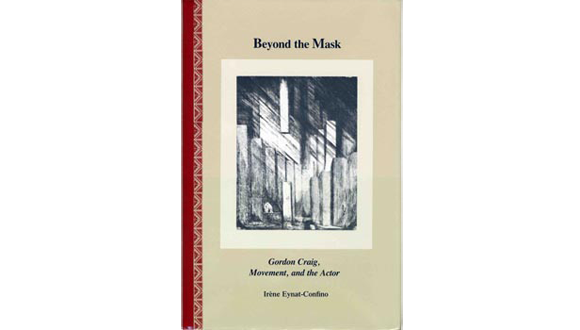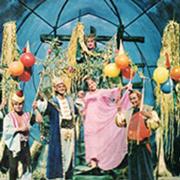Beyond the Mask
Gordon Craig, Movement, and the Actor
Irene Eynat-Confino
Southern Illinois University Press
Carbondale and Edwardsville, 1987
Gordon Craig, Movement, and the Actor
Irene Eynat-Confino
Southern Illinois University Press
Carbondale and Edwardsville, 1987
Edward Gordon Craig sought the very heart of theatre. In his experiments and theories he looked beyond the play, actor, and visual trap-pings. In a similar manner. Irene Eynat-Confino goes beyond the conventional consideration of Craig's purported theories of the actor, scenery, and the scene painter to get at the heart of Craig's idea of theatre. To accomplish her goal, she draws not only on the research of contemporary Craig scholars but on material hitherto unavailable—his writ-ings and daybooks, and the writings of friends— that do much to clarify the development of Craig's ideas and experiments. She demon-strates more clearly than ever before the com-plex interrelation between Craig's private life and his creative work. She analyzes for the first time the evolution of Craig's concept of movement and the inter-relation between the Craigian space and move-ment, actor and uber-marionette. practice and theory. Eynat-Confino ties Craig's encounter with Isadora Duncan to a decisive modification in his notion of movement. To have an instru-ment more controllable than the actor, he in-vented the uber-marionette, a giant puppet. But movement was not to be restricted to the per-former alone. Craig also invented the "Scene," a kinetic stage. Shaped like the Italian box. but holding instead of scenery a multitude of paral-lelepipeds or "cubes" that moved up and down, it was intended to create forms in space and affect the viewer the way music affects its lis-tener. The "screens" that brought him world-wide fame were simply an adaptation of this concept for the regular theatre.
Eynat-Confino argues that in a scenario Craig wrote in 1905 and that is published here for the first time, is revealed his messianic vi-sion—based on a theosophical system like that of Blake—which was the main force motivating Craig's artistic quest. He wrote the scenario for the International Uber-Marionette Theatre that he planned to open in Dresden in 1906 with a special purpose in mind: to bring Belief to the world. The International Uber-Marionette Theatre did not open as planned, because the iiber-marionette was not ready in time. This led to the loss of the financial backing promised by a group of businessmen who had shown interest in the venture. From 1907 on. Craig had to carry on his experiments without substantial fi-nancial assistance. Eynat-Confino believes that Craig's famous 1912 retraction of his views on the liber-marionette was an effective strategic move that brought him the financial support needed for a School for the Art of the Theatre. The school opened in Florence, in 1913, only to be closed by the war.
In her final chapter, Eynat-Confino carefully examines the psychological, aesthetic, and cir-cumstantial factors that kept Craig from com-pleting his work and prevented its development into his new art of the theatre by which Belief would be spread, bringing "friendliness - hu-mor - love - ease - peace" to the world. Irene Eynat-Confino is a free-lance writer, researcher, and theatre consultant in Herzelia, Israel, who received her Ph.D. degree from the Sorbonne, Paris. She has taught theatre history and criti-cism at Tel-Aviv University and is now working on the meaning of the fantastic in modern West-em theatre.





